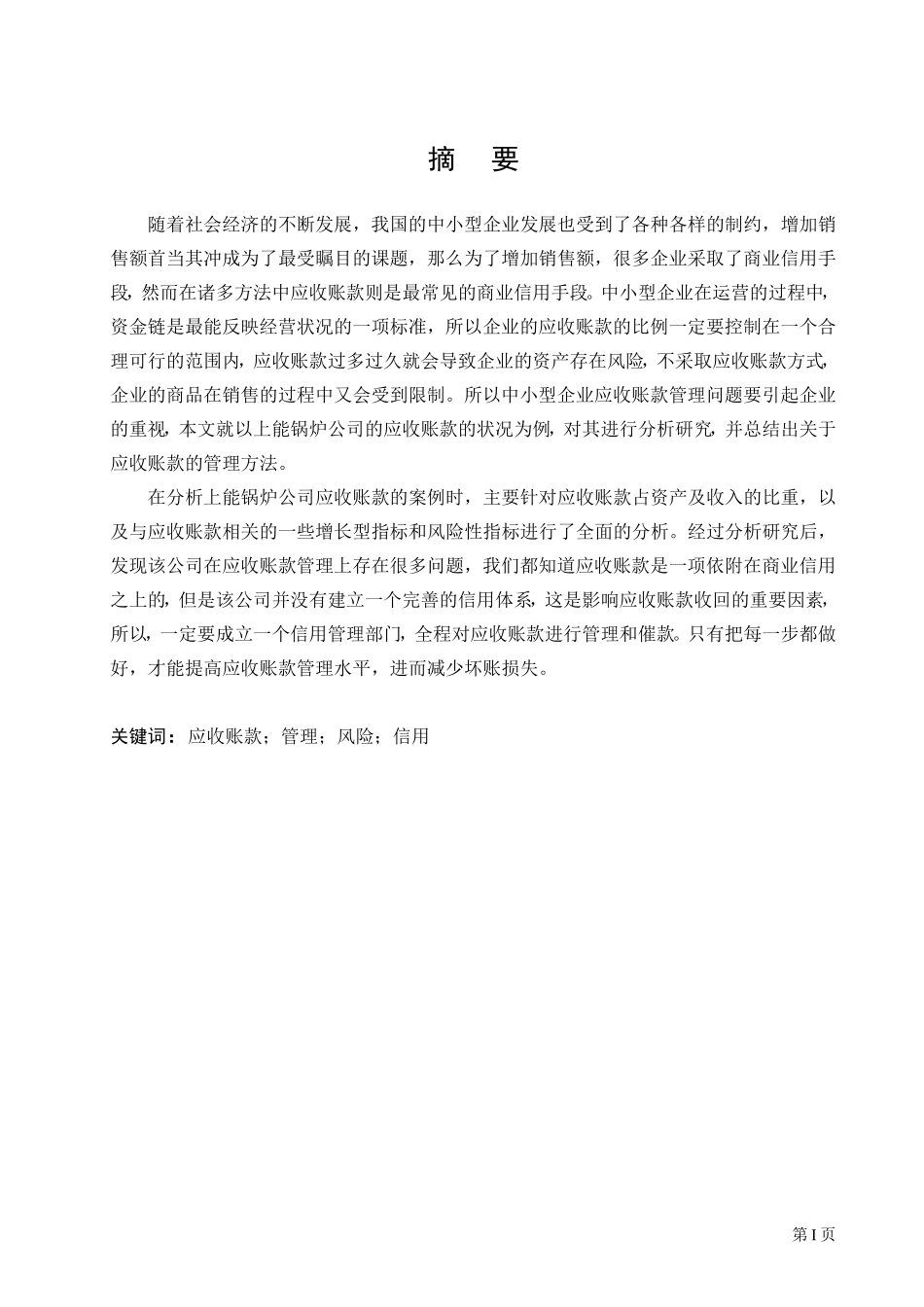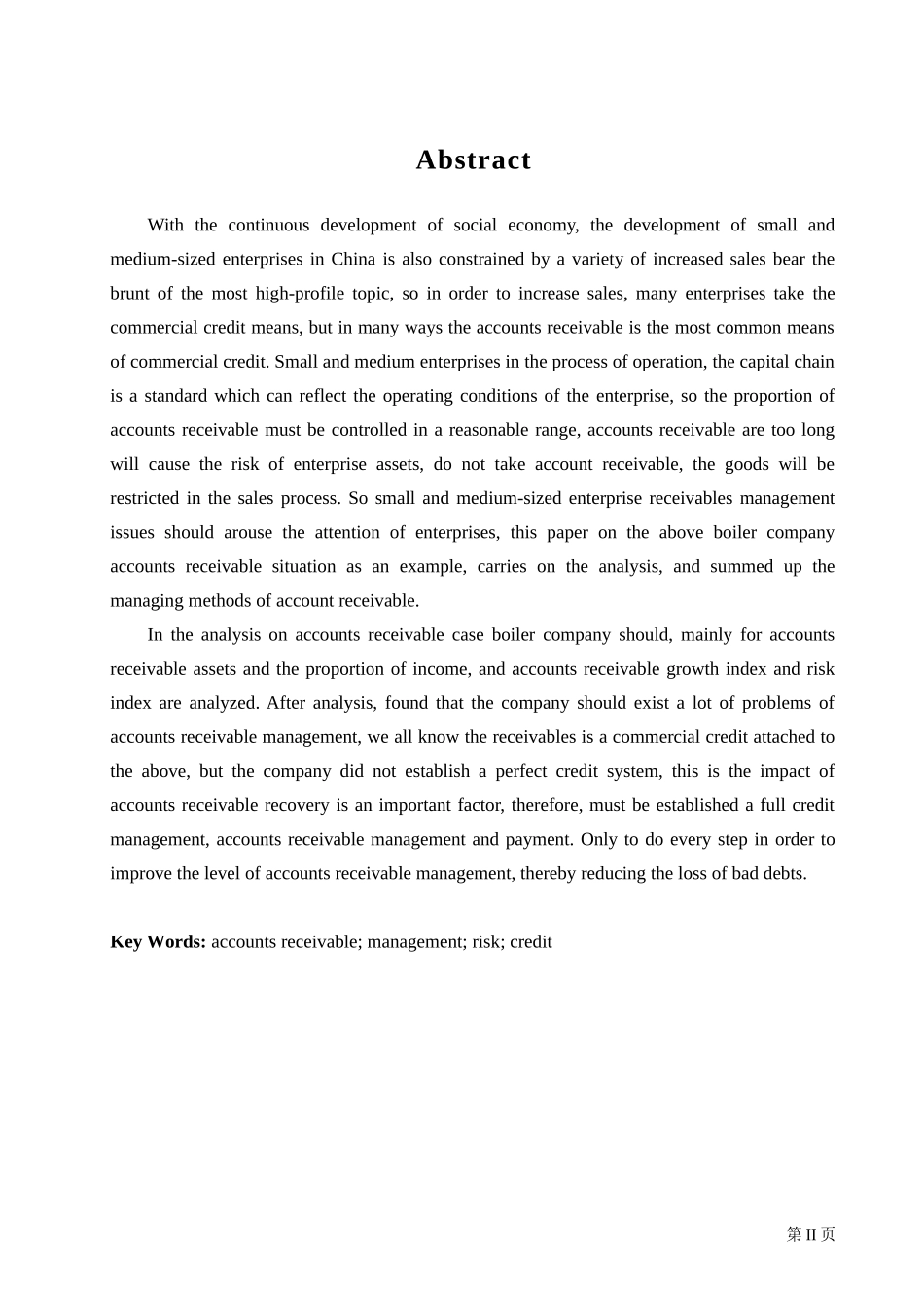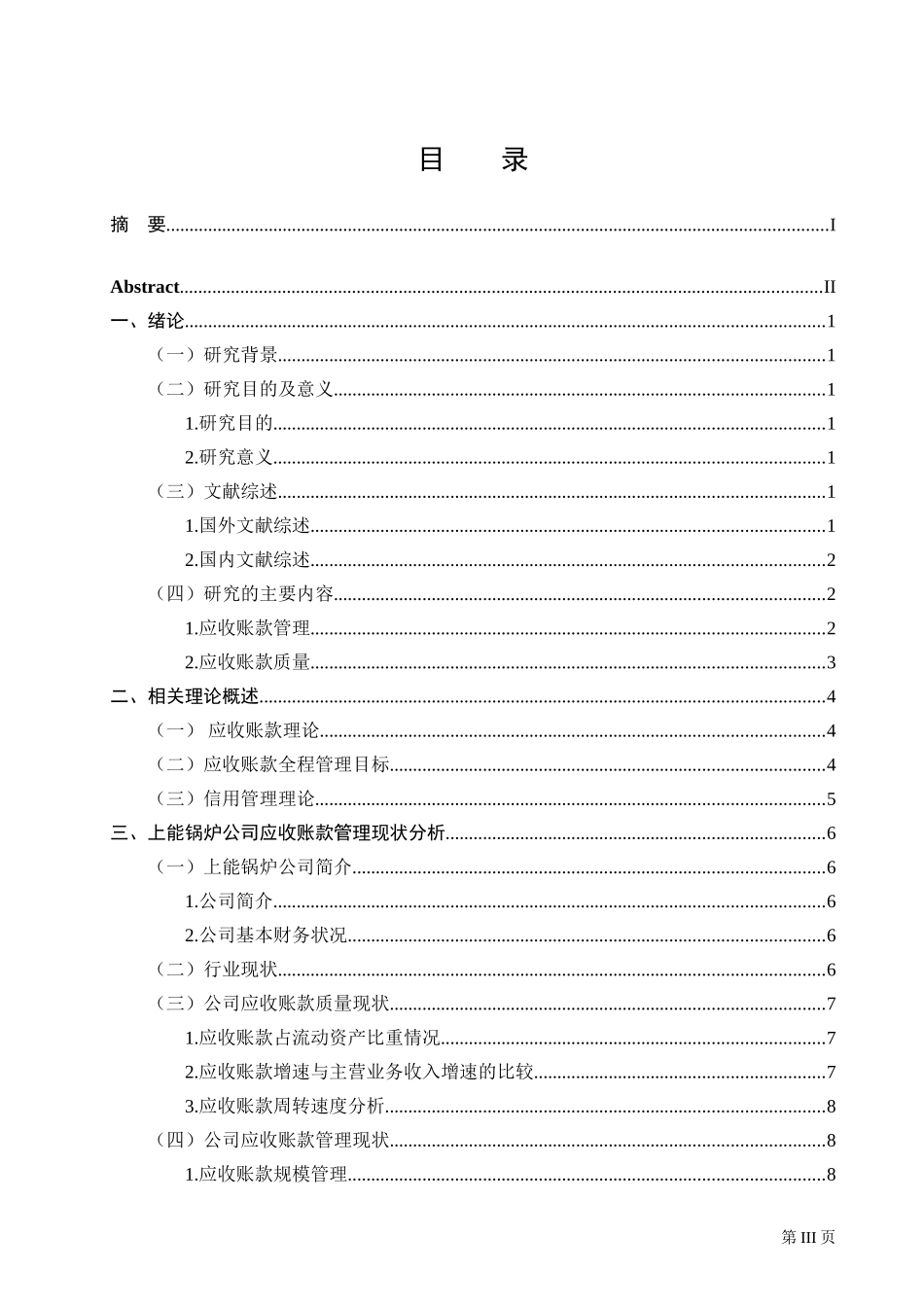摘 要随着社会经济的不断发展,我国的中小型企业发展也受到了各种各样的制约,增加销售额首当其冲成为了最受瞩目的课题,那么为了增加销售额,很多企业采取了商业信用手段,然而在诸多方法中应收账款则是最常见的商业信用手段。中小型企业在运营的过程中,资金链是最能反映经营状况的一项标准,所以企业的应收账款的比例一定要控制在一个合理可行的范围内,应收账款过多过久就会导致企业的资产存在风险,不采取应收账款方式,企业的商品在销售的过程中又会受到限制。所以中小型企业应收账款管理问题要引起企业的重视,本文就以上能锅炉公司的应收账款的状况为例,对其进行分析研究,并总结出关于应收账款的管理方法。在分析上能锅炉公司应收账款的案例时,主要针对应收账款占资产及收入的比重,以及与应收账款相关的一些增长型指标和风险性指标进行了全面的分析。经过分析研究后,发现该公司在应收账款管理上存在很多问题,我们都知道应收账款是一项依附在商业信用之上的,但是该公司并没有建立一个完善的信用体系,这是影响应收账款收回的重要因素,所以,一定要成立一个信用管理部门,全程对应收账款进行管理和催款。只有把每一步都做好,才能提高应收账款管理水平,进而减少坏账损失。关键词:应收账款;管理;风险;信用 第 I 页AbstractWith the continuous development of social economy, the development of small and medium-sized enterprises in China is also constrained by a variety of increased sales bear the brunt of the most high-profile topic, so in order to increase sales, many enterprises take the commercial credit means, but in many ways the accounts receivable is the most common means of commercial credit. Small and medium enterprises in the process of operation, the capital chain is a standard which can reflect the operating conditions of the enterprise, so the proportion of accounts receivable must be controlled in a reasonable range, accounts receivable are too long will cause the risk of enterprise assets, do not take account receivable, the goods will be restricted in the sales process. So small and medium-sized en...












